1909 Japanese 10 Sen Coin
Hello Silver & Gold stackers! Another week and I have another Japanese coin for you! This time we'll be looking at a 10 sen coin. If you happened to remember my 20 sen post then this may look very familar. If not, I'll explain as we go.
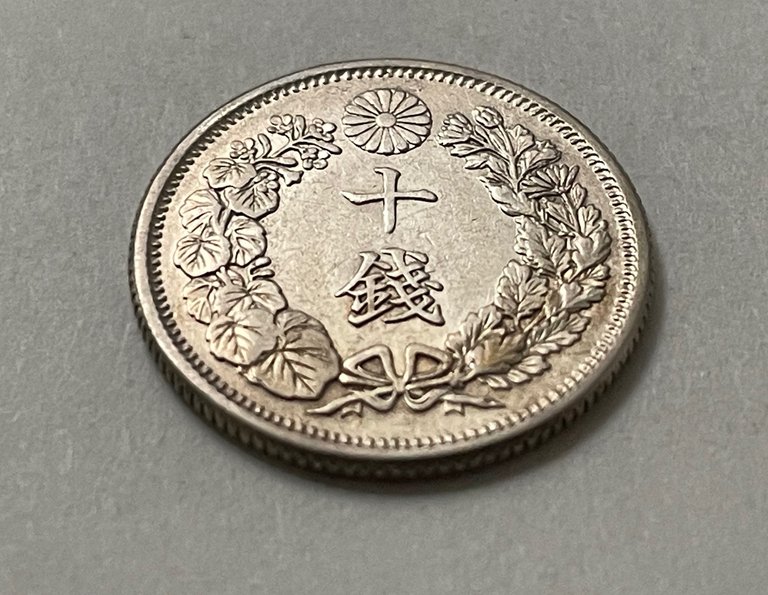
I'll give some basic coin stats, then we'll look at both sides, and then I'll give some more general info!
Sound fun? Let's go!
Stats
Some basic coin stats for you:
- 2.25g
- 17.57mm diameter
- 1.14mm thickness
- edge: reeded
and most importantly, it's 72% silver, so that means about 1.62 grams of silver. Only an itsy bitsy widdle coin, but silver. Woohoo silver!
It's a tiny coin, exactly the size of a US dime. Let's look in more detail.
Front Side
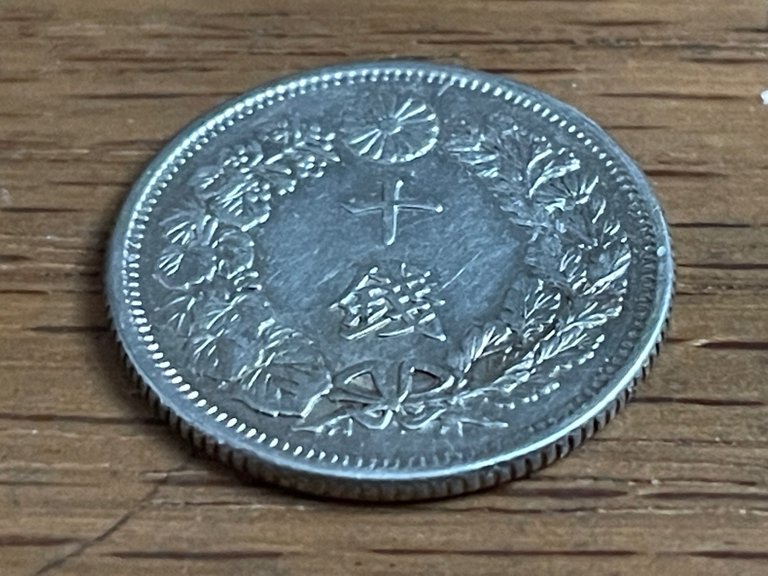

On the front side you can see a laurel wreath, the left branch is paulownia and the right branch chrysanthemum. The crest at the top is a chrysanthemum flower, which has long been the crest of the imperial family. Below the crest is written "10 sen" (十銭).
Or maybe this is the back side. Ah, doesn't matter. Moving on.
If that looks familar to you, it's because it's exactly the same as the 20 sen coin I covered before. Well, not exactly the same. There is one difference. The kanji in the middle says "10 sen" (十銭) instead of "20 sen" (二十銭).
That's not a big difference. Maybe the other side will help us tell the two coins apart easier.
Back Side
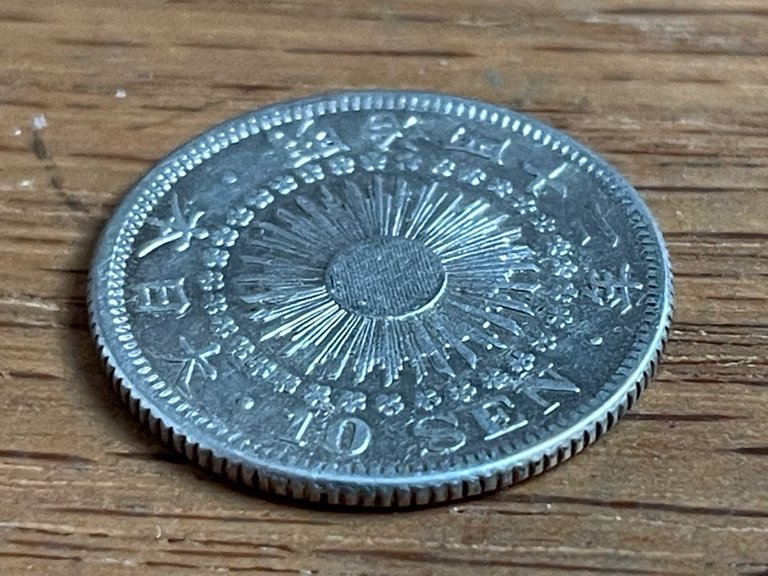
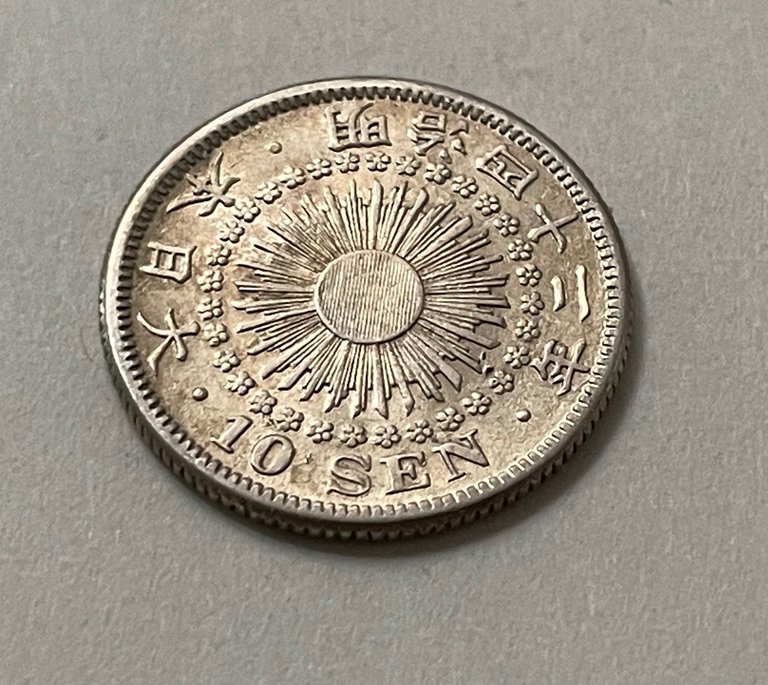
The back has a radiant sun burning bright in the middle and a circle of cherry blossoms going around. Around that along the outer edge is written "Great Japan" (大日本), "10 sen", and "Meiji 42" (明治四十二年) which is the Japanese way of saying 1909. Interestingly, the kanji is written backwards, from right to left, which is not common today but was at this time.
Again: exactly the same as the 20 sen!
So both sides are pretty much exactly the same, the only difference being the addition of a single kanji on the other side. Wow. I imagine back in the day people made a lot of mistakes between these two coins. One is abouta dime size, and one closer to a nickel, but without the thickness and edge differences between a dime and nickel. If you aren't paying attention, that is really going to be easy to confuse these...
20 and 10 sen, side by side
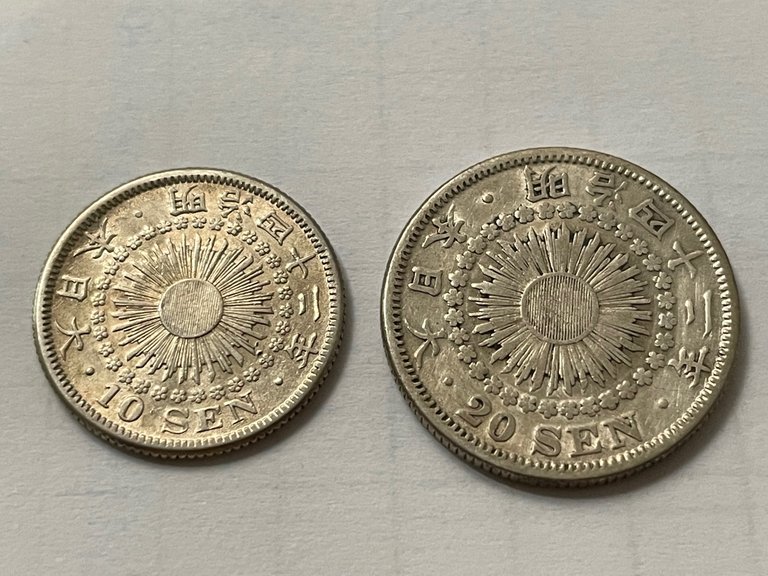
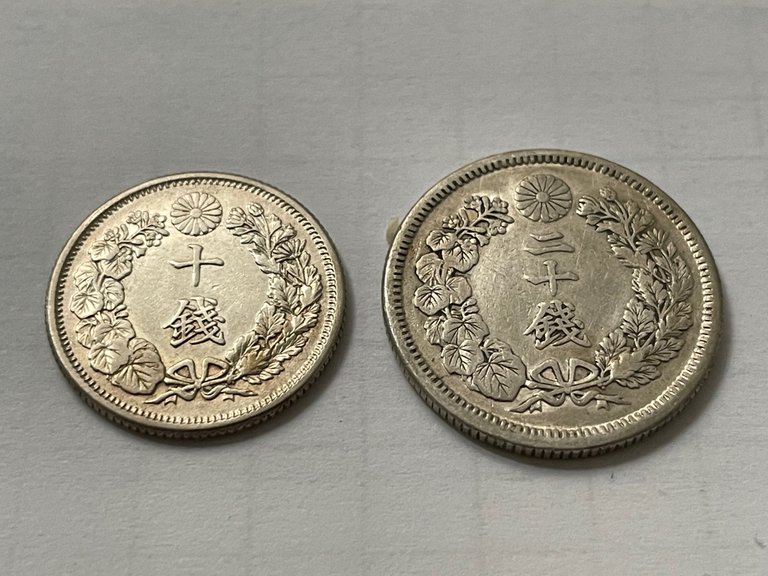
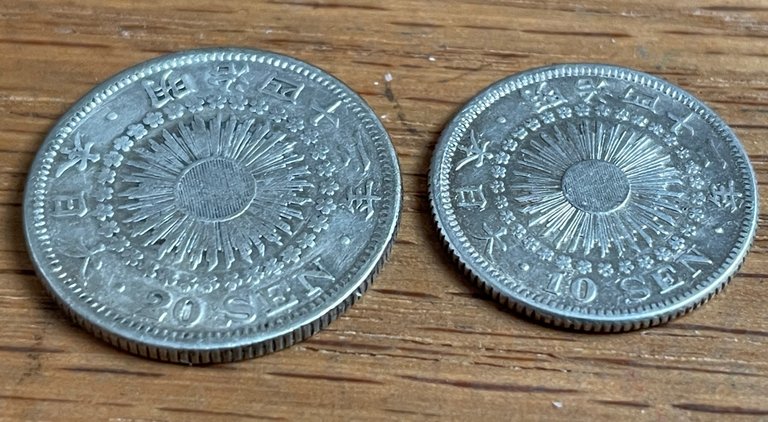
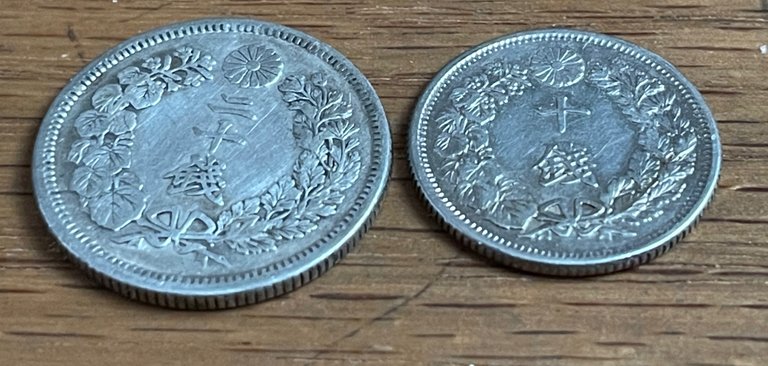
Yeah, uh huh, not confusing at all. No siree bob.
I mean, there is that kanji difference that is easy to see even if you don't read Japanese, there is the (slight) size difference, and there is a (slight) weight difference as well. So, yes, we can tell them apart with little difficulity when we are paying attention. But if you were in a hurry or if you were under the influence, these would have been really easy to confuse.
I think the government did finally realize this, because later versions of the 10 sen coin featured a hole in the middle. Those aren't silver so I haven't ordered any, but then again I might just for comparison's sake in the future. Might be cool to look at the evolution of the coin.

The 10 resting on top of the 20

Resting on a dime. Same size
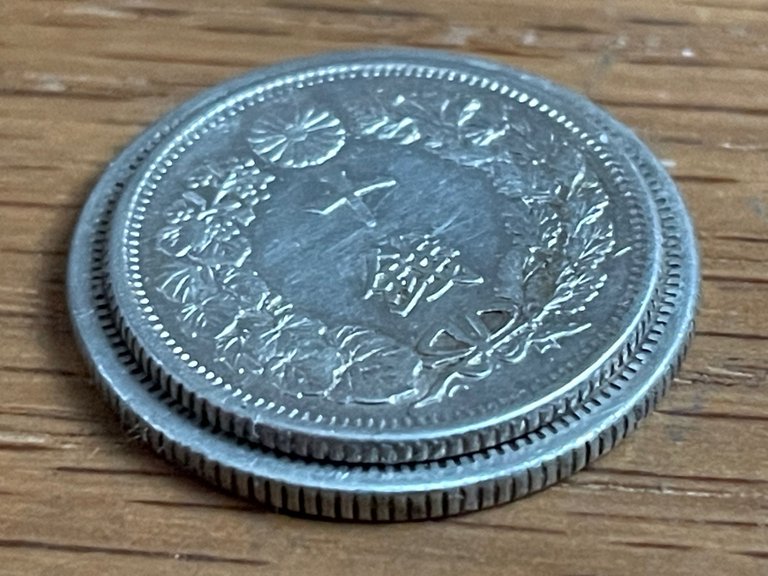
The 10 resting on the 20 again
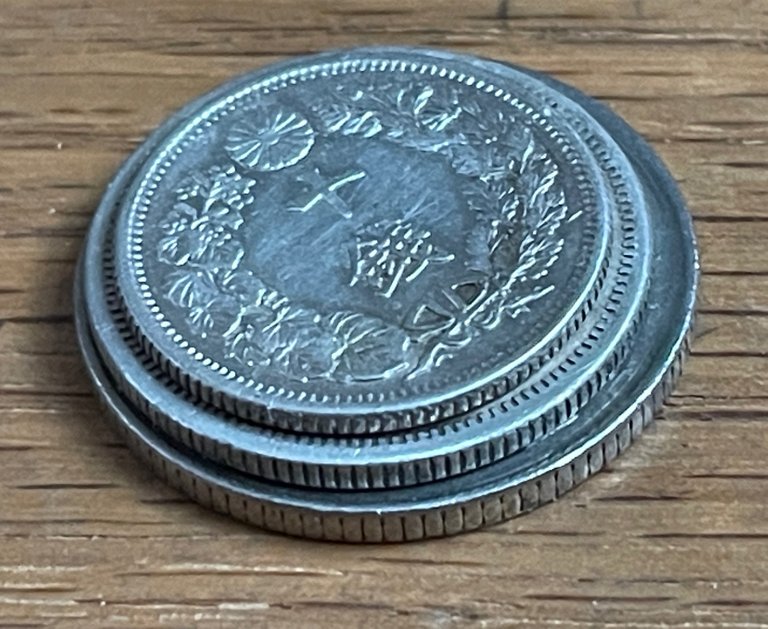
Both resting on a ¥100 coin
Overall
Prior to the hyperinflation following WWII, the yen was subdivided into 100 sen (and the sen was subdivided into 20 rin). I don't know what the model for that division was. But it is meaningless these days anyway, since the government decided to scrap both sen and rin after the war and make the yen the only currency unit. It's kind of too bad, but that's probably an attitude only coin guys have.
As I wrote on my 20 sen post, I really love this design. Shame they don't use it anymore. But maybe in the future we will see a return, who knows.

If you have any comments or questions, leave me a good comment.
❦
 |
David LaSpina is an American photographer and translator lost in Japan, trying to capture the beauty of this country one photo at a time and searching for the perfect haiku. |
Very interesting coin and I can see how they could have been confused with each other in a pinch. I wish I would have learned more Japanese when I was stationed there in the service. Especially to be able to read Kanji would ahve been real useful in many situations. Luckily around the bases everything was in kanji and english.
Where were you stationed when you were here? These days there is a lot of English everywhere. Frankly, I kind of get annoyed, because it makes the lazy part of my brain want to just read the English and ignore all Japanese, and I don't want that. heh but that's a small problem that only a language learner has. For everyone else, it's getting pretty convenient. My city also has Portuguese everywhere because of all the Brazilians here so many sighs have three languages.
I was in Okinawa.
I've never been down there so I can't compare how things are. There is a marine base fairly close to me, over in Shizuoka. I see the military helicopters flying back and forth everyday.
Looking at some maps, it looks like that prefecture is where Camp Fuji is. I have never been there, but have been to MCAS Iwakuni in the Yamaguchi Prefecture a couple of times.
I might start to collect silver coins and stack them for the pleasure of collecting them.
Sounds like a good idea to me 😃
Sweeeettttt
Very!
At least I could read the numbers. Japanese numbers are identical to Chinese numbers.
At least until they start writing the fancy versions on the banknotes. Those I think are different between Chinese and Japanese.
Nice design and its a silver coin. Its good to have those.
Very good!
Very nice, 72% silver that's an interesting composition
Yeah, as far as junk silver goes, these coins are nice ones!
Coin in perfect condition, great purchase :)
!hiqvote
Thanks!
@barski, the HiQ Smart Bot has recognized your request (1/2) and will start the voting trail.
In addition, @dbooster gets !PIZZA from @hiq.redaktion.
For further questions, check out https://hiq-hive.com or join our Discord. And don't forget to vote HiQs fucking Witness! 😻
https://timebrookinvestment.com/u/sign_up?r=Giuseppe